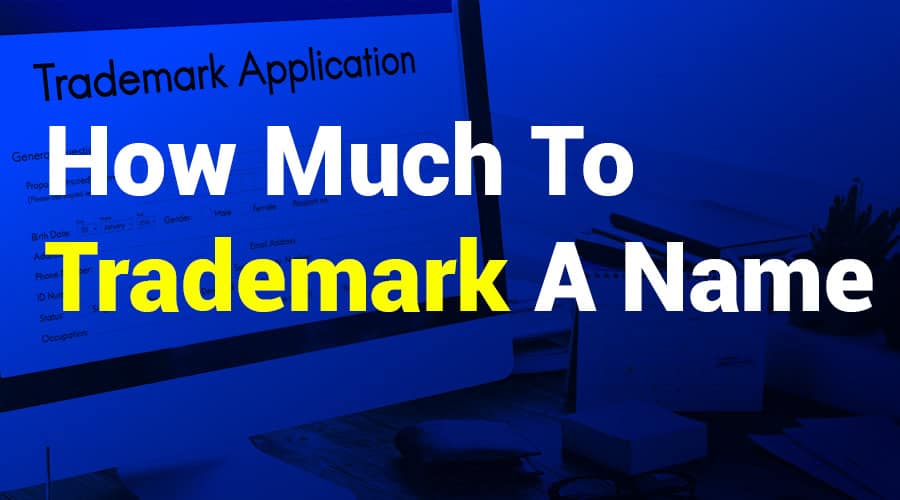
Trademarking a name is critical for any business owner, brand manager, or personal brand who wants to protect their identity from unauthorized use. Without a registered trademark, your business name can be used by others, diluting your brand’s uniqueness and possibly leading to customer confusion. Yet, many are unsure about the costs associated with trademarking a name. Understanding these costs and the factors influencing them can make trademarking decisions more accessible, especially for smaller businesses or those just starting.
The cost of trademarking a name varies depending on where you file, how many categories (or “classes”) of goods or services your name covers, and whether you seek legal assistance. Trademarks can be filed at the state level or with the United States Patent and Trademark Office (USPTO) for federal protection. Federal registration offers broader protection across the U.S., while state registration is more limited geographically but may be sufficient for local businesses.
In this guide, we’ll cover everything you need to know about how much to trademark a name costs. We’ll discuss the factors affecting these costs, various ways to save money and address common misconceptions. By the end, you’ll have a clear understanding of trademarking costs, enabling you to decide whether trademarking is right for your business.
How Much to Trademark a Name?
The cost of trademarking a name can vary widely based on location and filing method. In the U.S., a federal application through the USPTO typically costs between $225 and $600 per class. However, additional legal fees may apply if you seek professional assistance. Despite the cost, trademarking is vital for protecting your brand and ensuring exclusivity in the marketplace, which can be invaluable to growing businesses.
What Is the Cost to Trademark a Name?
Trademarking a name is a strategic investment for any brand or business that wishes to safeguard its unique identity. This section will dive deeply into the associated costs and break down how these costs are calculated. Generally, in the United States, the most common way to trademark a name is through the United States Patent and Trademark Office (USPTO). For each category of goods or services you want the trademark to cover, called a “class,” the USPTO charges between $225 and $400.
The variation in these costs depends on the filing method. The USPTO offers two primary forms of electronic filing: the TEAS Plus and TEAS Standard. TEAS Plus has a lower fee ($225) but has more specific requirements, such as strict classifications and pre-defined goods and services descriptions. TEAS Standard allows more flexibility but at a higher filing fee ($275 or more).
It’s important to note that a trademarked name often needs protection across multiple classes. For example, if you’re trademarking a business name that sells software and physical products, each would require a separate class and, thus, additional fees. This quickly increases the cost of trademarking a name, making it essential to budget accordingly.
Additionally, hiring an attorney can add $500-$2000 or more, depending on the complexity of your application and location. Attorneys are often recommended for those unfamiliar with the process, as they can help navigate complex legal requirements, avoid errors, and reduce the risk of rejection. However, some business owners handle the application themselves to save on legal fees. Filing independently requires careful attention to detail but is achievable with research and thorough documentation.
For international brands, trademarking costs may vary further, as every country has its trademark laws and fee structures. The European Union, for instance, charges about €850 for the first class, with additional fees for each subsequent class. Given the variations in cost, deciding early on where you need your trademark protection is crucial, as expanding protection internationally can be quite costly.
Why Trademarking Your Name Matters?
Trademarking a name is more than legal ownership; it’s about brand protection, establishing credibility, and preventing potential conflicts. Here are some key benefits of trademarking a name:
Benefits of Trademark Protection
Legal Ownership: A registered trademark gives you exclusive rights to use the name for specific goods or services. This legal ownership means other businesses cannot legally use a similar or identical name within your category.
Protection Against Infringement: Trademarking prevents others from using your name, helping avoid customer confusion and ensuring your brand remains distinct. For example, a trademark can prevent competitors from leveraging your brand reputation by using a similar name.
Enhanced Credibility and Trustworthiness: A registered trademark increases your brand’s credibility. Customers view trademarked names as more reliable and trustworthy, as the brand has taken the extra step to protect its identity.
Types of Trademarks
There are different types of trademarks, each serving a distinct purpose. Understanding which one fits your business can help you protect your brand’s unique aspects.
Standard Character Marks: This is the most common form and covers the brand name or slogan without regard to specific fonts, sizes, or colors.
Design Marks or Logos: This trademark applies specifically to the design elements and is protected as a unique visual identifier for businesses with a distinct logo.
Trade Dress: Less common but highly important for businesses with a unique product appearance, trade dress protects the overall look and feel, such as packaging.
Federal vs. State Trademark Costs
Federal trademarks, as registered with the USPTO, offer broad protection across all U.S. states, making them ideal for businesses with national or multi-state reach. State trademarks, by contrast, are more affordable but are limited to protection within the specific state’s boundaries. This option can be suitable for local businesses or entrepreneurs who don’t plan to expand beyond state lines.
Renewing Trademarks and Associated Fees
Trademarks require renewal every ten years to stay active. The USPTO charges renewal fees, and failure to meet these deadlines can lead to losing trademark protection. This renewal ensures that the trademark remains legally enforceable, allowing you to continue benefiting from its protection.
Steps to Trademark a Name and Save Money
The following steps can help you trademark a name efficiently while minimizing unnecessary costs:
- Research Trademark Availability
Conduct a thorough search using the USPTO’s Trademark Electronic Search System (TESS) or through an international database for trademarks to verify that your desired name is available. - Choose the Correct Trademark Class
Trademarks are filed in classes representing the goods or services they cover. Knowing the classes that apply to your business can prevent extra fees by avoiding irrelevant categories. - Decide Between State and Federal Applications
State trademarks offer cost-effective, local protection, whereas federal applications cover the entire U.S. Assess your business’s geographical scope to choose the appropriate option. - Consider Doing It Yourself
Filing independently can reduce legal fees, but it requires thorough research. If you opt for this method, be prepared to handle the legal paperwork and requirements on your own. - Use Online Trademark Services
Several online platforms offer filing assistance at lower fees than traditional law firms. These platforms guide users through the process with easy-to-use tools and resources.
Common Misconceptions about Trademark Costs
When it comes to trademarking, there are a few misconceptions that can lead to confusion and even costly mistakes:
Trademarking Is Too Expensive
While some perceive trademarking as costly, it’s typically more affordable than dealing with a brand infringement dispute later on. Initial costs may seem high, but they pale compared to the expenses incurred from legal battles or lost brand recognition.
Domain Names Provide Brand Protection
Owning a domain does not protect your brand legally. While it may secure your web address, it does not offer the same protections as a registered trademark, leaving you vulnerable to competitors who may register similar names.
Once registered, It’s Permanent.
Trademarks require maintenance and renewals. Every ten years, a renewal fee is required to keep the trademark active, ensuring it remains enforceable.
You Don’t Need a Trademark if You’re Small
Even small businesses benefit from trademarking, especially in niche markets where competition can grow quickly. Trademarking early on safeguards your brand as you expand.
How to Reduce the Cost of Trademarking a Name
There are effective strategies to make trademarking more affordable without sacrificing the quality of protection.
Filing Without an Attorney: Many businesses successfully file independently, which can significantly reduce costs. However, this approach requires attention to detail and a thorough understanding of USPTO requirements.
Opt for State Trademark Filing: If your business primarily operates in one state, a state trademark can provide sufficient protection at a fraction of the cost of federal registration.
Trademark Maintenance Costs: Be aware of renewal fees and schedule them into your business budget to avoid lapses in protection.
Conclusion
Trademarking a name is a strategic decision that protects your brand identity, establishes credibility, and reduces infringement risks. The cost can vary based on the type of protection, legal assistance, and application method, but understanding these factors will help you make an informed choice. A trademark is a worthwhile investment that strengthens your brand’s position in the market, offering you long-term security and exclusivity.
FAQ’s
Q. How much does it cost to trademark a name in the US?
A. With the USPTO, costs range between $225 and $600 per class. Additional legal fees apply if an attorney is used.
Q. Can I trademark a name for free?
A. No, trademarking requires filing fees. State trademarks can offer a lower-cost alternative.
Q. How long does a trademark last?
A. A trademark lasts ten years, with renewals required to keep it active.
Q. Do I need a lawyer to trademark a name?
A. A lawyer is helpful but not required. Many people file on their own to save on legal fees.






